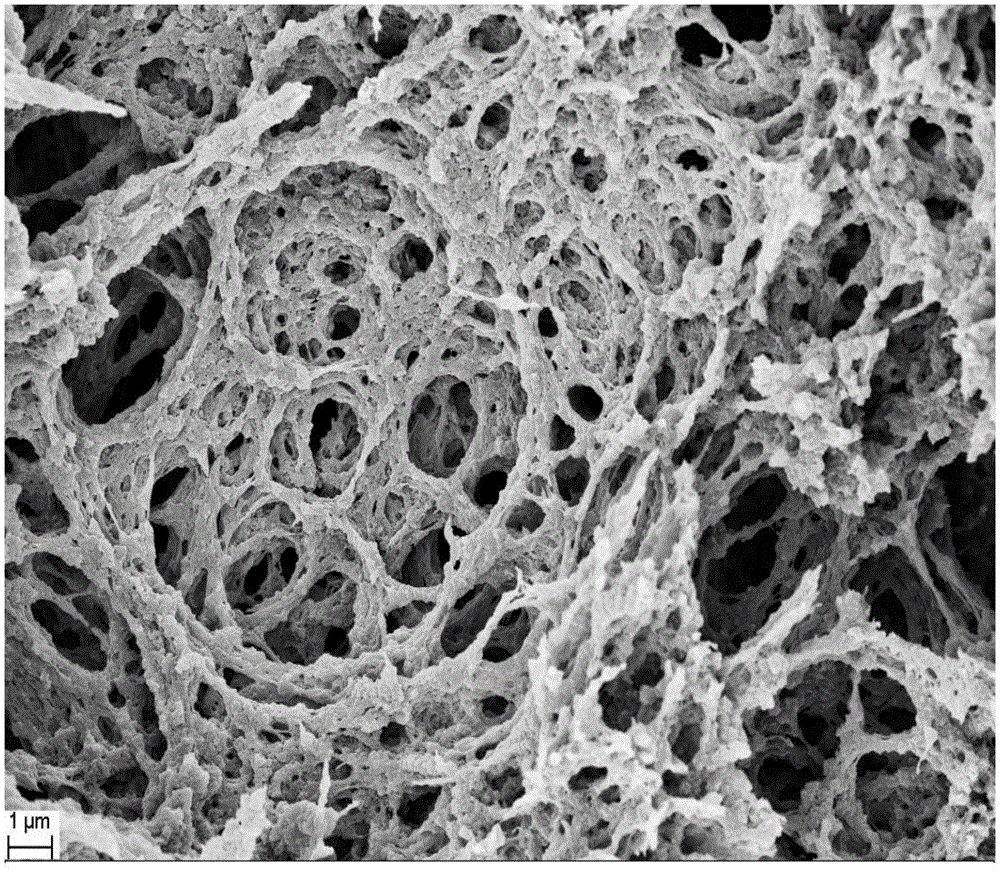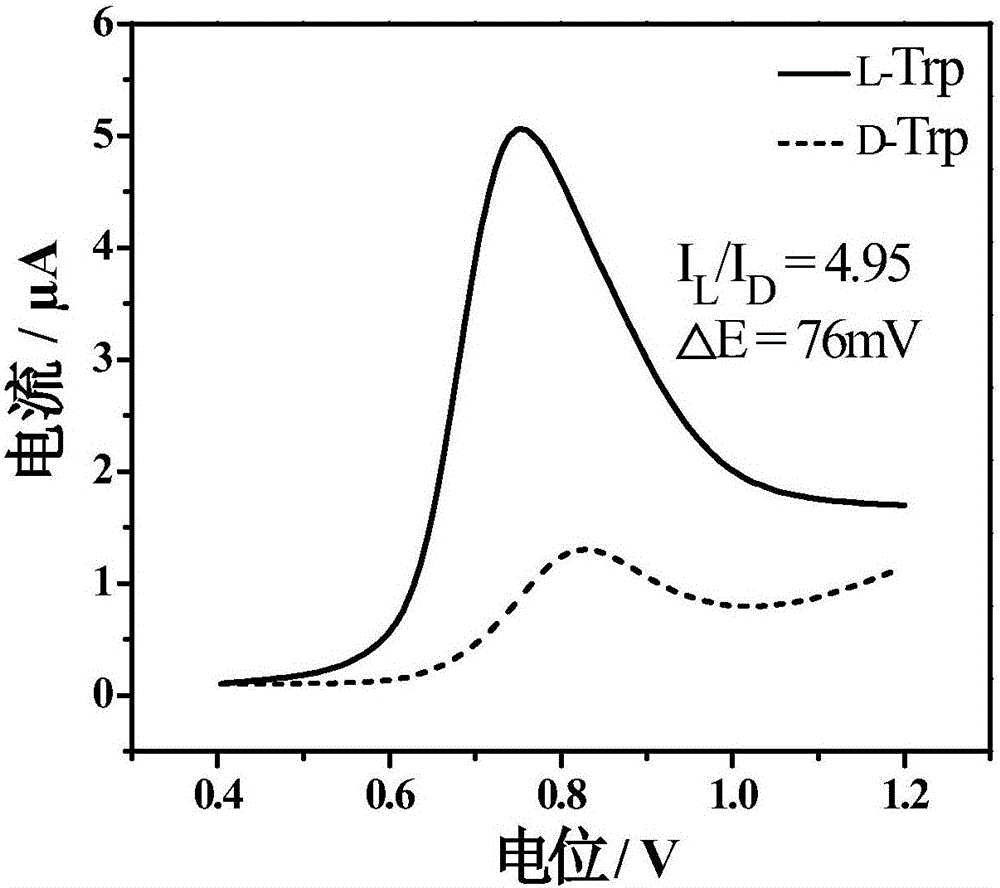Preparation of carboxymethyl cellulose-chitosan composite material and identification of tryptophan enantiomer by modified electrode of composite material through electrochemical process
A technology of carboxymethyl cellulose and tryptophan enantiomers, which is applied in the field of biotechnology and electrochemical research, can solve the problems of difficult online detection, high cost, and poor reproducibility of capillary electrophoresis, and achieves a simple preparation method The effect of environmental protection and good recognition ability
- Summary
- Abstract
- Description
- Claims
- Application Information
AI Technical Summary
Problems solved by technology
Method used
Image
Examples
Embodiment 1
[0029] Take sodium carboxymethyl cellulose powder and dissolve it in 50mL of 0.1M sodium dihydrogen phosphate (pH=7) solution, stir to dissolve it completely, configure it into a 2mg / mL sodium carboxymethyl cellulose solution, and then add it to the solution Add 50 mg of 1-ethyl-(3-dimethylaminopropyl) carbodiimide hydrochloride and 50 mg of N-hydroxysuccinimide, and stir for 2 h to activate the carboxyl groups in sodium carboxymethylcellulose. Get chitosan powder and dissolve in 50mL0.1M acetic acid solution, stir to make it dissolve completely, and configure 2mg / mL chitosan solution. The chitosan solution is added dropwise in the sodium carboxymethyl cellulose solution, and the stirring is continued during the dropping process. The precipitated white solid is a carboxymethyl cellulose-chitosan composite material, which is centrifuged, and the obtained composite material is Rinse 3 times with 0.1M acetic acid solution to remove unreacted chitosan, then wash the composite mate...
Embodiment 2
[0031] Preparation of carboxymethyl cellulose-chitosan composite material and its modified electrode The electrochemical method for identifying tryptophan enantiomers includes the following steps:
[0032] (1) Ultrasonic disperse the carboxymethyl cellulose-chitosan composite material in ultrapure water, pipette 5 μL (2 mg / mL) of the dispersion liquid onto the surface of the glassy carbon electrode, and dry at room temperature .
[0033] (2) After the prepared carboxymethylcellulose-chitosan composite modified electrode was placed in 25mL / D-tryptophan solution for 60s, the electrochemical window range of 0.4-1.2V (vs.SCE) Differential pulses were performed within each measurement, and the modified electrode was swept in 25mL of 0.1M sodium dihydrogen phosphate (pH=7) to restore the activity of the electrode after each measurement. The recognition effect of tryptophan enantiomers by carboxymethylcellulose-chitosan composite modified electrode is shown in the appendix figure ...
Embodiment 3
[0035] In order to study the differences in the ability of carboxymethylcellulose-chitosan composite modified electrodes to recognize tryptophan enantiomers at different temperatures. Therefore, the differences in the recognition efficiency of tryptophan enantiomers by the composite were examined at 6°C, 8°C, 10°C, 15°C, 20°C, 25°C, 30°C and 35°C, respectively. The effects of recognition of tryptophan enantiomers by carboxymethyl cellulose-chitosan composite modified electrodes at different temperatures are shown in the appendix image 3 , it can be seen that when the temperature is 25 ℃, the recognition effect of the carboxymethyl cellulose-chitosan composite modified electrode on the tryptophan enantiomer reaches the best.
PUM
| Property | Measurement | Unit |
|---|---|---|
| Concentration | aaaaa | aaaaa |
Abstract
Description
Claims
Application Information
 Login to View More
Login to View More - R&D
- Intellectual Property
- Life Sciences
- Materials
- Tech Scout
- Unparalleled Data Quality
- Higher Quality Content
- 60% Fewer Hallucinations
Browse by: Latest US Patents, China's latest patents, Technical Efficacy Thesaurus, Application Domain, Technology Topic, Popular Technical Reports.
© 2025 PatSnap. All rights reserved.Legal|Privacy policy|Modern Slavery Act Transparency Statement|Sitemap|About US| Contact US: help@patsnap.com



